Yoga, Karma, and Rebirth
Yoga, Karma, and Rebirth
| A Brief History and Philosophy |  |
Stephen H. Phillips
 COLUMBIA UNIVERSITY PRESS NEW YORK
COLUMBIA UNIVERSITY PRESS NEW YORK
Columbia University Press
Publishers Since 1893
New York Chichester, West Sussex
cup.columbia.edu
Copyright 2009 Columbia University Press
All rights reserved
E-ISBN 978-0-231-51947-2
Library of Congress Cataloging-in-Publication Data
Phillips, Stephen H., 1950
Yoga, karma, and rebirth : a brief history and philosophy / Stephen H. Phillips.
p. cm.
Includes bibliographical references and index.
ISBN 978-0-231-14484-1 (cloth : alk. paper)ISBN 978-0-231-14485-8 (pbk.)ISBN 978-0-231-51947-2 (electronic)
1. Yoga. I. Title.
B132.Y6P48 2009
A Columbia University Press E-book.
CUP would be pleased to hear about your reading experience with this e-book at .
Contents
T his book grew out of an upper-division course I developed at the University of Texas at Austin, Yoga as Philosophy and Practice, and I would like to thank first of all Ellen Briggs Stansell, my teaching assistant for its first three years. Together we discussed all the topics broached here. Concurrently Ellen became a yoga teacher as well as a doctoral candidate, completing a thesis on the Bhagavad Gita. Matthew Dasti and Neil Dalal, also graduate students at Texas, made helpful comments, as did my philosophy colleague and fellow yoga student Kathleen Higgins. Matthew helped me select passages from the Gita to translate in , the book has benefited from extensive comments by Colin Foote, particularly with regard to Buddhist theories and practices.
Let me thank my yoga teachers, many of whom I have doubtless copied in scripting a yoga class in : Brigitte Snyder (best of flow teachers), John Schlorholtz (author of the DVD series Ageless Yoga, and my brother-in-law), Peggy Kelly (founder of Austin School of Yoga), Mary Keator, Cary Choate, Jessica Montgomery, Annick Sebbane, Ravyn Abboushi, Genevieve Gilbreath, Larissa Rogers, Jenn Wooten, Charlie Llewellyn, Pam Brewer, Jessica Wozniak, Brienne Brown, Devon Dederich, Jerry Balderas, Enid Baptiste, Kaye Klier, Matt Borer, Rachel Hector, Ana Pilar, Elizabeth Cafferky, Chuck Hausman (Kewal), Dorothee Bethscheider (Dodo in Auroville, South India), Kimberley Jones, Esta Herold (Seva), Tenille Collard, Jessica Goulding, Jenny Dawson, and Christina Sell. Two of these guru-jis attended my lectures on Indian philosophies at UT and read portions of the book in draft, providing helpful reactions; Ravyn Abboushi and Genevieve Gilbreath thus deserve special acknowledgmentas does Peggy Kelly, dean of Austin yoga teachers, and senior Anusara teacher Christina Sell, who read portions of the Kularnava Tantra with me. Tracie Brace, founder of Yoga Rasa, Houston, and Michael Benton (Mehtab) and friends at Yogayoga, Austin, graciously rewarded a little teaching of Sanskrit on my part by enriching my practice through help as teachers or students, as did dozens more, all of whom I salute with heartfelt thanks.
, third section will appear in the Jadavpur Journal of Philosophy (in press) and was read as part of the Sri Aurobindo Annual Lecture Series, Jadavpur University, Kolkata, 2008. Special thanks go to Indrani Sanyal and her colleagues in the Philosophy Department at Jadavpur and to editors and others who have facilitated these papers and publications.
I am especially grateful to Wendy Lochner, Christine Mortlock, Leslie Kriesel, Martin Hinze, Derek Warker, and Milenda Lee at Columbia University Press. Wendy Lochner in particular had a large hand in shaping this book through championing the appendices as well as editing several sections while encouraging me to write for a wide audience.
| om paramatmane namah |  |
agnim ile. I call the fire, ancient priest of the sacrifice, the divine who summons (the divinities), bringing here jewels.
RIG VEDA 1.1.1
This is the life energy (prana) that radiates out from every being. Knowing this, the knower tends not to excessive disputation. / Playing and relishing in the self (atman) with self as his delight, doing works he becomes the best of Brahman knowers.
MUNDAKA UPANISHAD 3.1.4
Sumedha: Surely a buddha I shall be.
JATAKA1.3
Setting himself in a clean place in a steady asana (posture, seat) that is neither too high nor too low (to be comfortable), on a cloth, animal skin, or kusha grass, there fixing heart and mind on a single point, working to bring his thought and emotion along with his faculties and organs under control, let him practice yoga for self-purification.
BHAGAVAD GITA 6.1112
atha yoga-anushasanam. Now instruction in yoga. Yoga is the stilling of fluctuations of thought and emotion (chitta). Then the seer (the conscious being) rests in its true nature. At other times, fluctuations are identified with.
YOGA SUTRA 1.14
Yoga is the unity (ekatva) of one thing with another.
MALINI-VIJAYOTTARA TANTRA 4.4.1
T he consciousness traditions of ancient India constitute the roots of yoga teaching. Buddhism carried yoga eastward, and all Eastern spiritual traditionsincluding the martial artshave common background with the yoga traditions of India. Some have argued that Christianity too is influenced by yoga, perhaps in the figure of Jesus himself. Clearly Sufism is. In India, traditions of yoga practice include or overlap with Vedantic, Jaina, Buddhist, Sikh, Vaishnavite, and Shaivite teachings. These are multidimensional complexes of ideas and culture, and are in large part the origins of yoga training programs that have spread all over the world.
There is, for example, the invocation, dedication, or other ritual beginning of a typical yoga class. This can be as simple as a single out-breath of the chant om, which is a mantra or sacred syllable according to very old Upanishads. Upanishads are secret teachings composed in Sanskrit, which was the lingua franca of ancient and classical India.
There are indications of yoga practice even earlier than the earliest Upanishads. The Rig Veda (Rig from Sanskrit rik, which means verse), the oldest text in Sanskrit (c. 1200 B.C.E. or earlier), is a source for yoga teaching, although, to be sure, there are disputes about its meaning. We will survey yoga literature in the last section of , setting the Vedas, Upanishads, Bhagavad Gita, Yoga Sutra, and other yoga texts in chronological order, as we identify the main themes of Yoga philosophy and trace their development up to the modern period. This book will become a first-person defense of a contemporary view that all yoga practitioners and sympathizers can stand behind confidently. But first we will review our Yoga inheritance.
Another example of reverberations of the Indian past in the modern studio is the practice of a teachers asking everyone to set an intention for the class to come, the session of an hour or so of asanas and conscious breathing. Sometimes it is suggested that one might tune into or refurbish an intention already formed. Such setting of an intention (samkalpa in Sanskrit) and bhavana
Next page
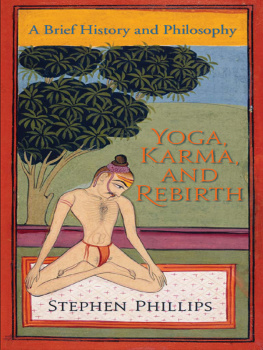

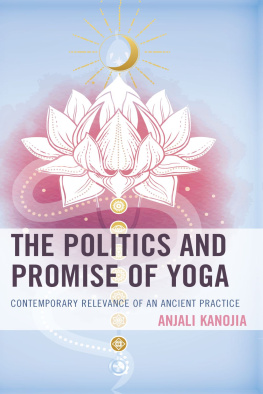
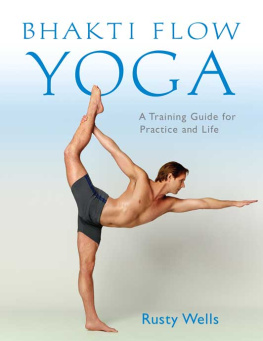

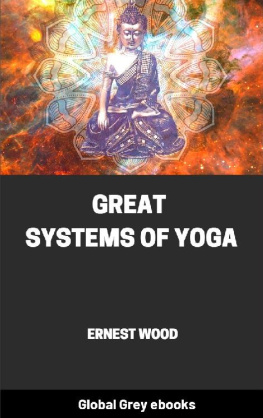

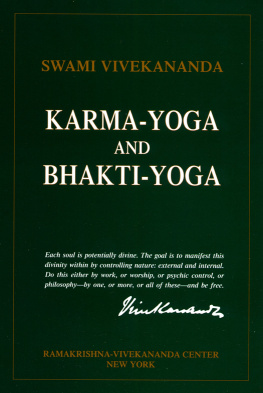



 COLUMBIA UNIVERSITY PRESS NEW YORK
COLUMBIA UNIVERSITY PRESS NEW YORK